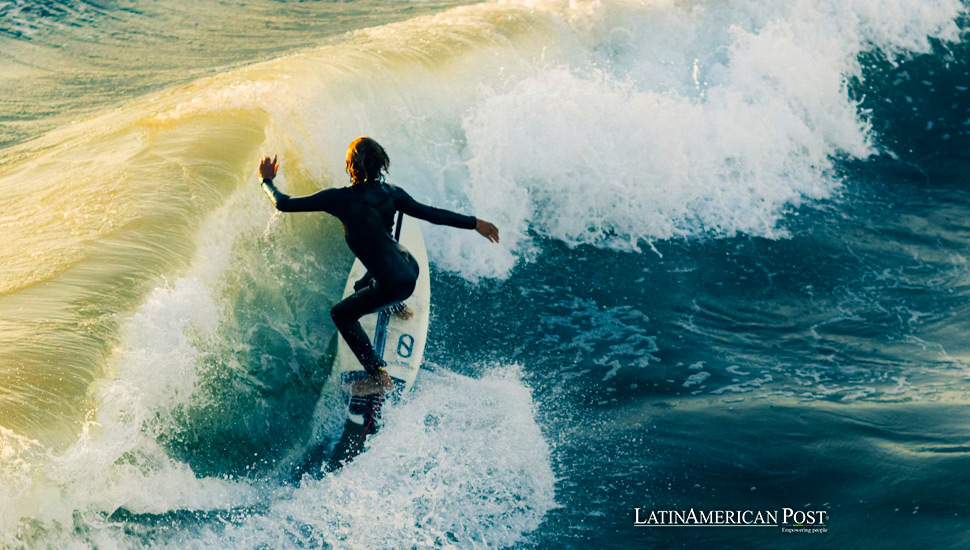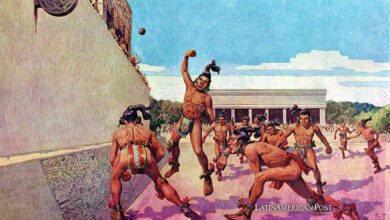Riding the Waves of Costa Rica’s Surfing Soul

Costa Rica, with its pristine beaches and perfect waves, has become a sanctuary for surfers around the globe. This feature dives into Costa Rica’s surfing revolution, highlighting the country’s rise as a surfing destination, the local talents shaping the sport, and the impact on tourism and culture.
Nestled amidst lush rainforests and volcanic peaks, Costa Rica boasts a unique coastline with consistent swells and pristine beaches. These geographical advantages have sculpted the country’s stunning landscapes and vibrant surfing culture, making Costa Rica a haven for wave riders and a global surfing paradise. Over the years, surfing has transcended the realm of mere sport, becoming deeply embedded in Costa Rican identity, driving a flourishing tourism industry, and fostering a deep appreciation for environmental preservation.
From Humble Beginnings to Global Recognition
The story of surfing in Costa Rica began subtly in the 1930s with visiting Californians introducing the sport to adventurous locals. However, it was in the 1970s that surfing truly began to gain momentum, fueled by the construction of the first surf camps and the arrival of international competitions. This growth coincided with a burgeoning environmental consciousness, creating a unique synergy between the sport and sustainability efforts. Surfers, deeply connected to the ocean, became natural advocates for its protection. Early pioneers like Steve Pezman, a surfer and journalist, established the “Save Our Surf” movement, raising awareness about the environmental impact of development on coastal ecosystems. This movement was crucial in shaping Costa Rica’s sustainable tourism practices, setting a global example for responsible travel experiences.
Inspiring Generations on and off the Water
Costa Rica has produced a wave of talented surfers who have captivated international audiences with their skills and served as inspirations for aspiring young surfers within the country. Among these figures stands out Carlos “Cali” Muñoz, a pioneer of big wave surfing who captivated the world with his fearless performances in challenging waves like Puerto Viejo de Talamanca. Muñoz, who tragically passed away in 2016, continues to be remembered for his dedication to the sport and his advocacy for protecting Costa Rica’s coastlines. Another prominent figure is Leilani McGonagle, a rising star who shattered age records on her way to becoming a world champion, inspiring young girls to pursue their dreams in the male-dominated world of professional surfing. McGonagle actively mentors young surfers and uses her platform to advocate for ocean conservation efforts. These individuals and countless others embody the dedication, resilience, and connection to the ocean that defines Costa Rican surfing.
The Surf Economy
Surfing’s impact extends far beyond sport and environmentalism, playing a pivotal role in Costa Rica’s tourism industry. The country’s consistent waves, diverse breaks for all skill levels, and stunning natural beauty have attracted surfers from all corners of the globe. This influx of visitors has fueled the growth of surf schools, camps, and lodges, creating a thriving tourism ecosystem that directly benefits local communities. Many of these establishments are family-run and operated, ensuring that tourism revenue directly impacts the lives of Costa Ricans. Additionally, high-profile competitions like the annual “Quiksilver Surf Open” further elevate Costa Rica’s reputation as a surfing destination, attracting sponsorships and media attention and contributing significantly to the national economy.
Balancing Growth with Sustainability
While surfing has undoubtedly brought economic prosperity to Costa Rica, the increasing influx of tourists also presents challenges. Balancing tourism growth with environmental sustainability is paramount to ensuring the continued enjoyment of pristine beaches and healthy ecosystems for future generations. The influx of visitors can contribute to increased waste generation, strain on water resources, and potential damage to coastal ecosystems. To mitigate these challenges, Costa Rica has embraced innovative solutions. Eco-friendly surf camps prioritize sustainable practices, such as using biodegradable products, implementing energy-efficient infrastructure, and organizing beach cleanups. Community-driven conservation programs empower local communities to participate in protecting their natural resources and raise awareness among tourists. Additionally, the Costa Rican government has implemented strict environmental regulations and established protected areas, ensuring the long-term health of the ecosystems that sustain the country’s surfing culture.
Embracing Responsible Tourism and Fostering Cultural Exchange
As Costa Rica navigates the future of surfing, the focus remains on fostering responsible growth and unwavering commitment to environmental sustainability. Through continued collaboration between local communities, tourism stakeholders, environmental organizations, and international partners, Costa Rica can ensure its breathtaking coastlines remain a playground for surfers worldwide while safeguarding the delicate ecosystems that nurture its unique surfing culture. The future of Costa Rican surfing also embraces cultural exchange and fosters global connections. Local surfers, like Noe Vargas, who co-founded the “Hearts & Waves” initiative, actively connect with international visitors through surf camps and educational programs, sharing their passion for the sport, their commitment to sustainability, and their rich cultural heritage. Ultimately, surfing is a powerful ambassador for Costa Rica, showcasing the nation.
Also read: Breaking Waves: Latin America’s Surging Influence in International Surfing





